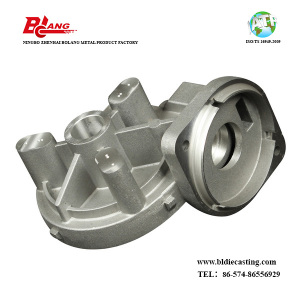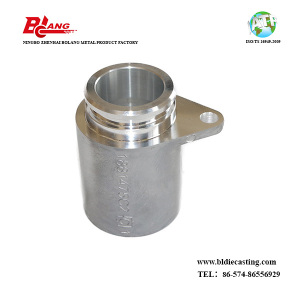Aluminum, a silver-white light metal, ranks 13th in the periodic table and has good ductility. The content of aluminum in the earth's crust is second only to oxygen and silicon, ranking third, and is a rich metal element in the earth's crust. It is an important metal material in industrial production. Because of its low melting point and good ductility, it is a metal material that is frequently used in the die casting industry.
Aluminum is a very important metal manufacturing because of its versatility and the variety of applications of both treated metals and their alloys in different industries.
High-pressure die-casting faster route makes the molten metal the finished component. This can be removed by injecting the molten metal into a hard steel mold, tool, and allowing it to cool and solidify pressure before it is removed. This process provides an accurate, rapid, low-cost production method for aluminum and zinc die castings, meeting the needs of the high-tech industry where the appearance and dimensional tolerances of the product are critical and the volume is not always large.
Aluminum is a high-pressure die-cast aluminum metal used in the process and is a metal alloy that has many advantages and is suitable for casting applications. Many of these reasons are due to the nature of the metal used in aluminum die casting processes. Aluminum has many characteristics that are very suitable for this process. Aluminum is very light and highly tough and can easily be defeated into different shapes and sizes depending on demand. It is also very malleable and has good dimensional stability allowing it to realize complex shapes and thin-walled parts. Aluminium is dust and corrosion resistant, has good electronic properties and excellent thermal properties because it is a good conductor of heat that retains heat and well-shaped actors.
It is a competitive pressure die casting process that requires a lot of ingredients, or tight tolerances and surface plating are better quality requirements to achieve gravity die casting. Also the need for machining is very low due to casting tolerances. Heat treatment of pressure die casting is not possible, but due to the high rate of solidification the mechanical properties are very good, however, the processing costs are much higher than they are for gravity die casting.
Other mold parts include slides and cores. The core components usually produce openings or positions, but they can all be used to create other details. There are three types of cores, loose, moving, and fixed. The loose core is used to create complex details and insert into dead hands. With a fixed kernel, it is pulled in parallel, and it is attached to death for a long time. Move the kernel in any other way than in parallel. Cleared out of the mold cavity solidified shot.
Aluminum is a very important metal manufacturing because of its versatility and the variety of applications of both treated metals and their alloys in different industries.
High-pressure die-casting faster route makes the molten metal the finished component. This can be removed by injecting the molten metal into a hard steel mold, tool, and allowing it to cool and solidify pressure before it is removed. This process provides an accurate, rapid, low-cost production method for aluminum and zinc die castings, meeting the needs of the high-tech industry where the appearance and dimensional tolerances of the product are critical and the volume is not always large.
Aluminum is a high-pressure die-cast aluminum metal used in the process and is a metal alloy that has many advantages and is suitable for casting applications. Many of these reasons are due to the nature of the metal used in aluminum die casting processes. Aluminum has many characteristics that are very suitable for this process. Aluminum is very light and highly tough and can easily be defeated into different shapes and sizes depending on demand. It is also very malleable and has good dimensional stability allowing it to realize complex shapes and thin-walled parts. Aluminium is dust and corrosion resistant, has good electronic properties and excellent thermal properties because it is a good conductor of heat that retains heat and well-shaped actors.
It is a competitive pressure die casting process that requires a lot of ingredients, or tight tolerances and surface plating are better quality requirements to achieve gravity die casting. Also the need for machining is very low due to casting tolerances. Heat treatment of pressure die casting is not possible, but due to the high rate of solidification the mechanical properties are very good, however, the processing costs are much higher than they are for gravity die casting.
Other mold parts include slides and cores. The core components usually produce openings or positions, but they can all be used to create other details. There are three types of cores, loose, moving, and fixed. The loose core is used to create complex details and insert into dead hands. With a fixed kernel, it is pulled in parallel, and it is attached to death for a long time. Move the kernel in any other way than in parallel. Cleared out of the mold cavity solidified shot.



